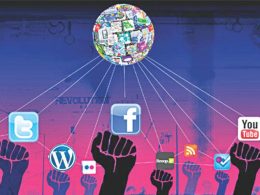As we navigate the aftermath of the global pandemic, the economic landscape is showing signs of a robust recovery, driven primarily by decisive economic policies and a resurgence in consumer spending and investment. Governments worldwide have implemented a range of economic policies aimed at stimulating growth. These measures, including significant monetary easing, fiscal stimuli, and support programs for various sectors, have been instrumental in steering the global economy toward recovery.
Moreover, there has been a notable surge in consumer spending and investment post-pandemic. With lockdowns lifted and restrictions eased, consumer confidence has rebounded, leading to increased expenditures on goods, services, and capital investments. This revitalization of consumer activity is fueling economic growth and helping to stabilize the global market.
Key Industries Driving the Post-Pandemic Surge

The economic growth post-pandemic is unevenly distributed among sectors, with e-commerce and healthcare standing out as significant drivers. The expansion of e-commerce has accelerated, as consumers continue to favor online shopping over traditional retail methods. This shift has not only increased sales but also spurred innovations in logistics, digital payment systems, and customer service technologies, contributing substantially to economic growth.
Healthcare has also seen transformative growth, driven by the urgent need for innovation in response to the pandemic. This sector’s expansion is not just in pharmaceuticals but also in biotechnology and healthcare infrastructure, which are crucial to the post-pandemic economic surge. Investments in these areas are likely to yield long-term benefits for global health and economic stability.
Changes in Consumer Behavior and Spending
The pandemic has permanently altered consumer behavior, particularly in terms of spending priorities. There has been a significant shift towards health and wellness, with consumers increasingly investing in health-related products and services. This trend is not only a direct response to the health crisis but also reflects a long-term change in consumer values towards personal health and well-being.
Additionally, the increase in online shopping and the use of digital payments have become more pronounced. The convenience and safety of these methods have attracted a larger demographic, changing the retail landscape significantly. This shift is expected to persist, further driving the growth of digital commerce and fintech.
Impact of Remote Work on Urban Economies
The shift to remote work has profound implications for urban economies, particularly in the commercial real estate sector. With more people working from home, the demand for office space has decreased, leading to a surplus of commercial properties and a decline in their value. This shift poses challenges for urban planners and investors in commercial real estate.
Furthermore, the urban retail and service sectors have experienced a downturn as the foot traffic that once sustained them has diminished. Businesses that traditionally relied on office workers are now facing reduced customer bases, forcing many to adapt or close. This transformation is reshaping the economic fabric of urban centers, prompting a reevaluation of urban economic strategies.
Government Stimulus Measures and Their Effectiveness
The effectiveness of government stimulus measures in reviving the economy post-pandemic has been notable, particularly for small businesses. These measures, which included grants, loans, and tax relief, have been vital in keeping many small enterprises afloat during critical periods. The success of these initiatives can be seen in the stabilization and in some cases, growth, of small businesses that were heavily impacted by the pandemic.
An analysis of post-pandemic fiscal policies reveals that proactive government interventions have played a crucial role in accelerating economic recovery. By injecting liquidity into the market and supporting vulnerable sectors, these policies have mitigated the adverse effects of the pandemic and laid the groundwork for a sustained economic upturn.
Shifts in International Trade and Investment

The post-pandemic period has witnessed significant shifts in trade policies and international investment flows. Governments are increasingly focusing on policies that protect domestic industries while fostering global trade relationships. These revamped trade policies have rejuvenated international trade, contributing to a dynamic global market environment.
Moreover, there has been an increase in foreign investments as global confidence returns. Investors are looking beyond their borders to capitalize on emerging opportunities, thereby boosting economic recovery and growth in multiple regions. This resurgence of investment is crucial for the global economic landscape as it fosters interconnectedness and mutual economic benefit.
Challenges Facing the Hospitality and Travel Sectors
The hospitality and travel sectors are among the hardest hit by the pandemic, and they continue to face significant challenges in recovery. Labor shortages, a direct consequence of the pandemic, have impacted service quality and operational capacity in hospitality. Businesses in this sector are struggling to meet pre-pandemic service standards, which could affect consumer satisfaction and sector recovery.
The travel sector is also adapting to new health and safety expectations, which have altered how services are provided. These changes require significant investment and innovation to meet evolving consumer expectations and regulatory requirements, posing ongoing challenges to full economic recovery in these sectors.
Long-Term Economic Predictions and Trends
Looking ahead, the economic trends emerging post-pandemic indicate significant growth prospects in several sectors. The e-commerce sector, in particular, is predicted to continue its rapid expansion, driven by sustained changes in consumer behavior and technological advancements. This growth is not only boosting retail but also positively affecting industries like IT, logistics, and digital marketing.
The trend towards increased remote work is expected to stabilize real estate markets in the long term. As businesses and employees adapt to this model, the demand for different types of real estate, such as residential and mixed-use properties, is likely to increase, compensating for the decline in commercial real estate demand.
In conclusion, the post-pandemic economic landscape is characterized by dynamic changes and growth opportunities across various sectors. While challenges remain, particularly in hospitality and travel, the overall economic outlook is optimistic, driven by innovative policies, changing consumer behaviors, and strategic investments.










